Highlights of Art Dubai 2018
The 11th edition of Art Dubai is the largest to date and, since the new director Myrna Ayad took over two years ago, she has made significant changes to the programme. So, with a bigger and arguably better fair this year, here are some of the highlights.
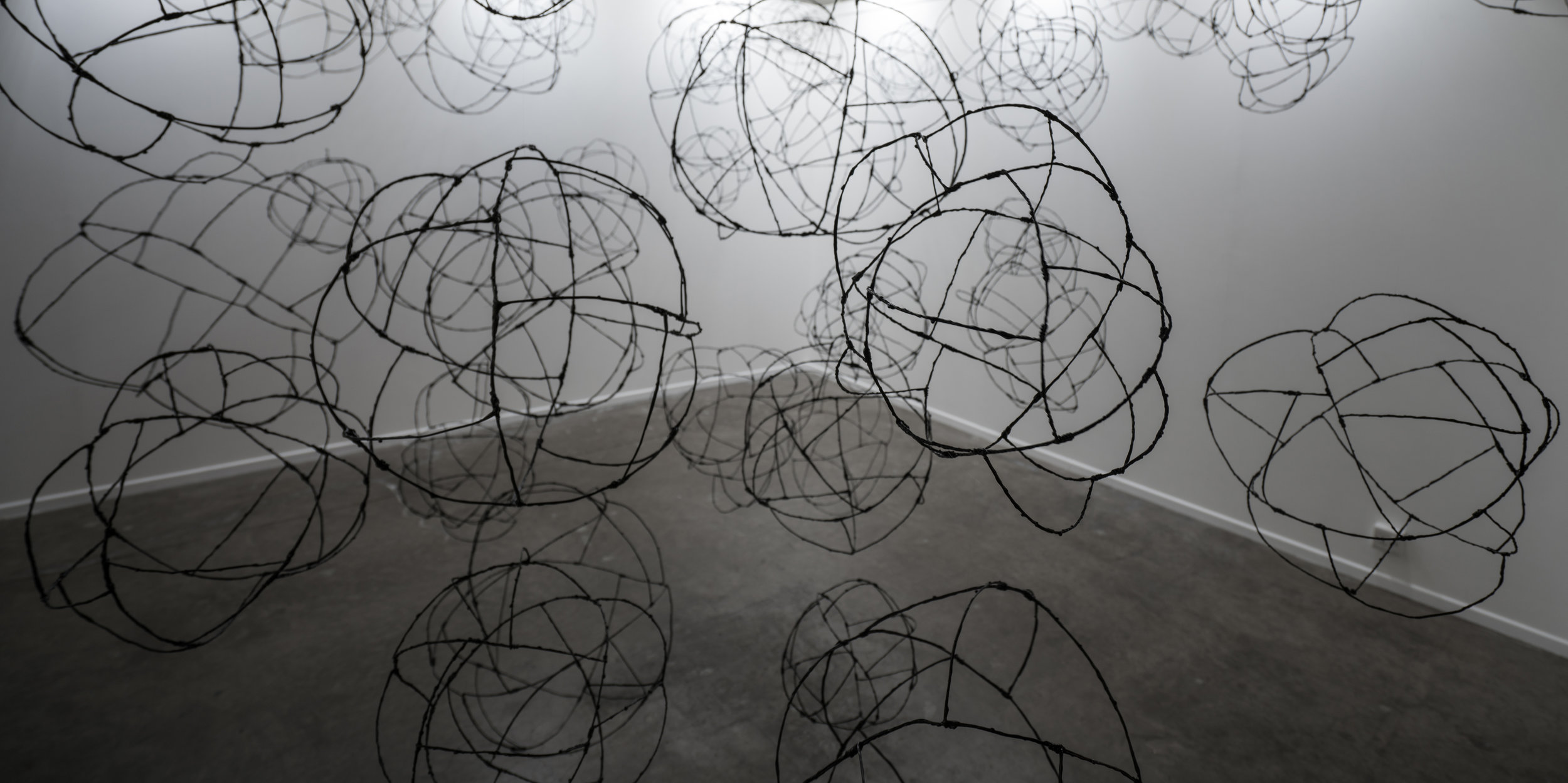



RESIDENTS
This is a new section for Art Dubai, housing the work of 11 emerging artists who were invited to live and work in the UAE for the month leading up to the event. Asked to immerse themselves in the social atmosphere of the country and to use locally sourced material as much as possible, the fruits of their labours are on show in the Residents section. Housed in the basement of Art Dubai’s Madinat Jumeirah, the new hall inhabits a car park, which has been left raw and untreated, to reflect the edgy tone of the work inside. Watch out for the work of Japanese artist Yasauaki Onishi at The Mine. Onishi has attempted to summarise the interlocking networks of infrastructure and populations that characterise the UAE with his hanging sculptures made from glue-dipped wire. Also, worth noting are abstract paintings by Iabadiou Piko at Orbital Dago gallery, a self-taught painter whose aesthetic is a Basquiat-esque expressiveness within which he has weaved symbols and language of the UAE.
SHEIKHA MANAL LITTLE ARTISTS PROGRAMME
The magical healing garden of Hiromi Tango is a whimsical universe filled with giant tissue paper flowers, date palms from coloured plastic balls and tree trunks wound from pipe-cleaners and woollen thread. Tango is a Japanese-Australian artist whose immersive installations are designed to capture the imagination of all who enter – and are particularly enchanting for children. As the nominated artist for the annual Sheikha Manal Little Artists Program at Art Dubai, Tango – who prefers to go by the name of Mama Gardener – welcomed children aged between 5 – 17 for interactive workshops. She encouraged the children to tell her how they are feeling and then to wrap those emotions in coloured fabric and create plants to fill in the imaginary garden. “It is my job to nurture children’s creativity and imagination and I have developed this programme with neuroscientists to foster repetitive exercises in children that will access the frontal lobe and help their emotional development.”


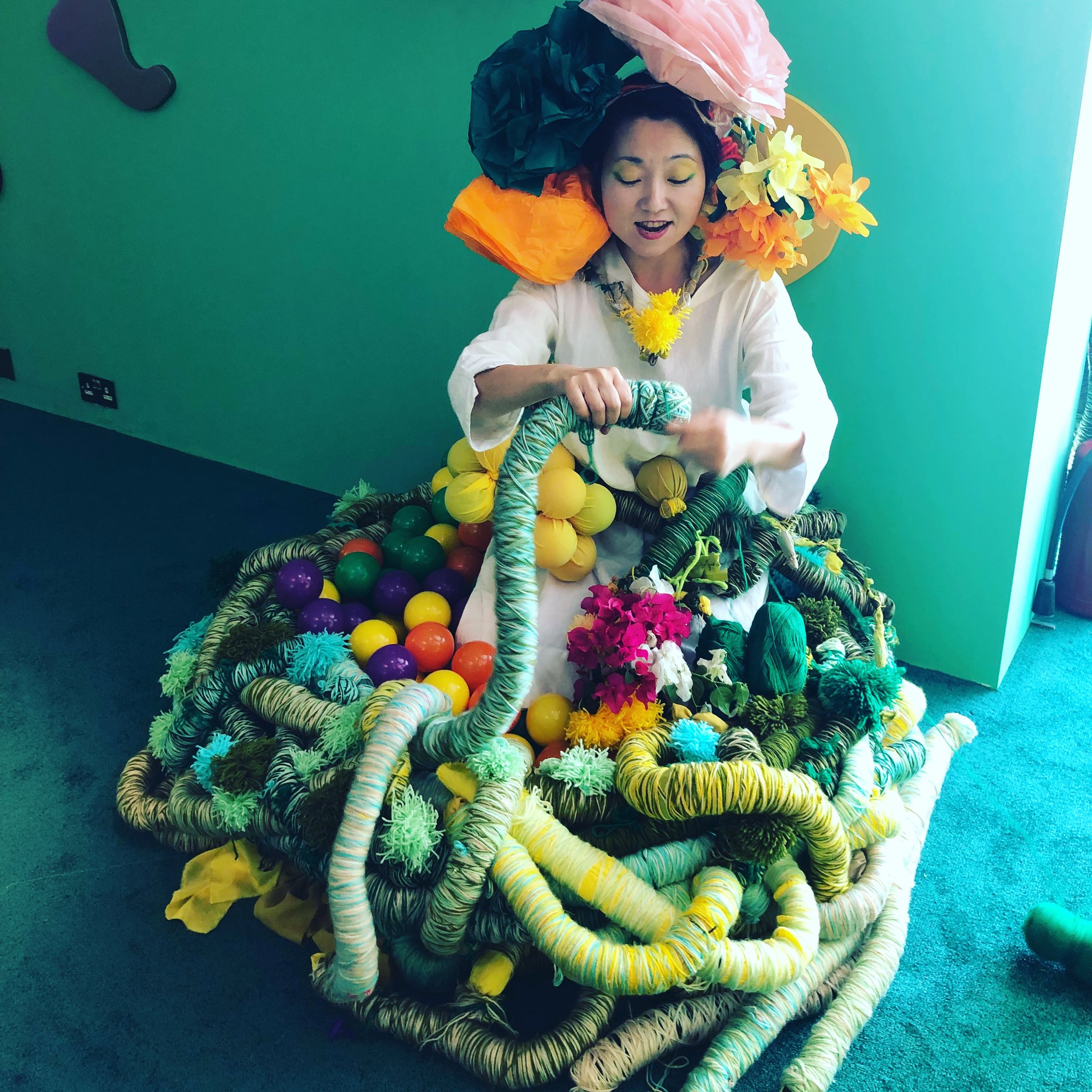
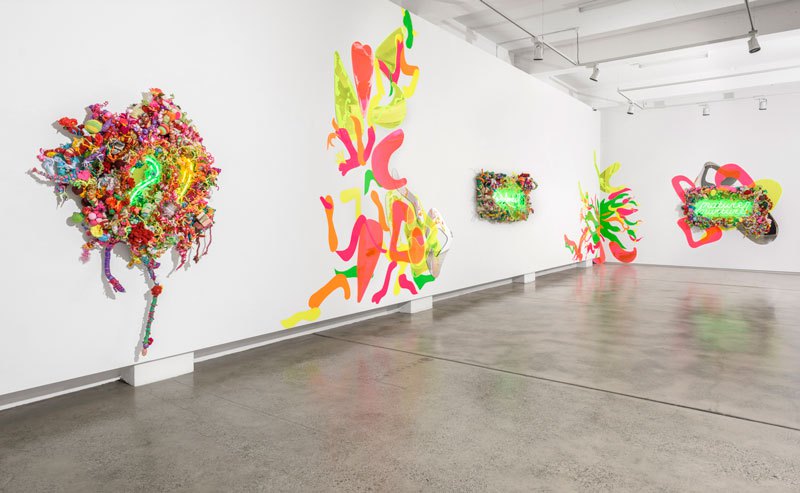
THAT FEVERISH LEAP INTO THE FIERCENESS OF LIFE
Sam Bardaouil and Till Fellrath’s curated and non-profit show adjacent to Art Dubai’s Modern section is indicative of the scholarly emphasis that the fair is putting upon history and research. That Feverish Leap into the Fierceness of Life, surveys five artists’ schools – in Khartoum, Casablanca, Cairo, Baghdad and Riyadh – across five decades and focuses on the great diversity across the region. Many schools were making deliberate and pointed efforts to move away from the influence of the West and set up their own manifestos or teaching methods as well as focusing on the social and political potential of art. Every day scenes such as women grinding flour or milkman delivering are seen as well as calligraphic and op-art tendencies of the Moroccan set. Whilst the hang of the exhibition could have been a little more imaginative, the quality of the works is exemplary and as a whole, the show offers a cross section through time and location that is rarely witnessed in such a condensed form.
ABRAAJ GROUP ART PRIZE
The outstanding contribution to the Abraaj Group Art Prize exhibition at Art Dubai 2018 is from the winner, Lawrence Abu Hamdan. The audio-visual practitioner put together a 20-minute film in which he discusses the wall as a metaphorical and physical divide. He talks about real walls that are being constructed all over the world in an effort to separate and keep communities apart but simultaneously talks about technologies being constructed to be able to see through walls and to permeate boundaries.
“There’s no wall on earth that’s still impermeable. What kind of new subject emerges when walls are multiplying, are more fortified, but are also, more and more, in their material function?” he says to the camera during his film. It is a fitting addition to the art fair, which prides itself on its global reach and its international participation in a city that has built its reputation on multiculturalism.
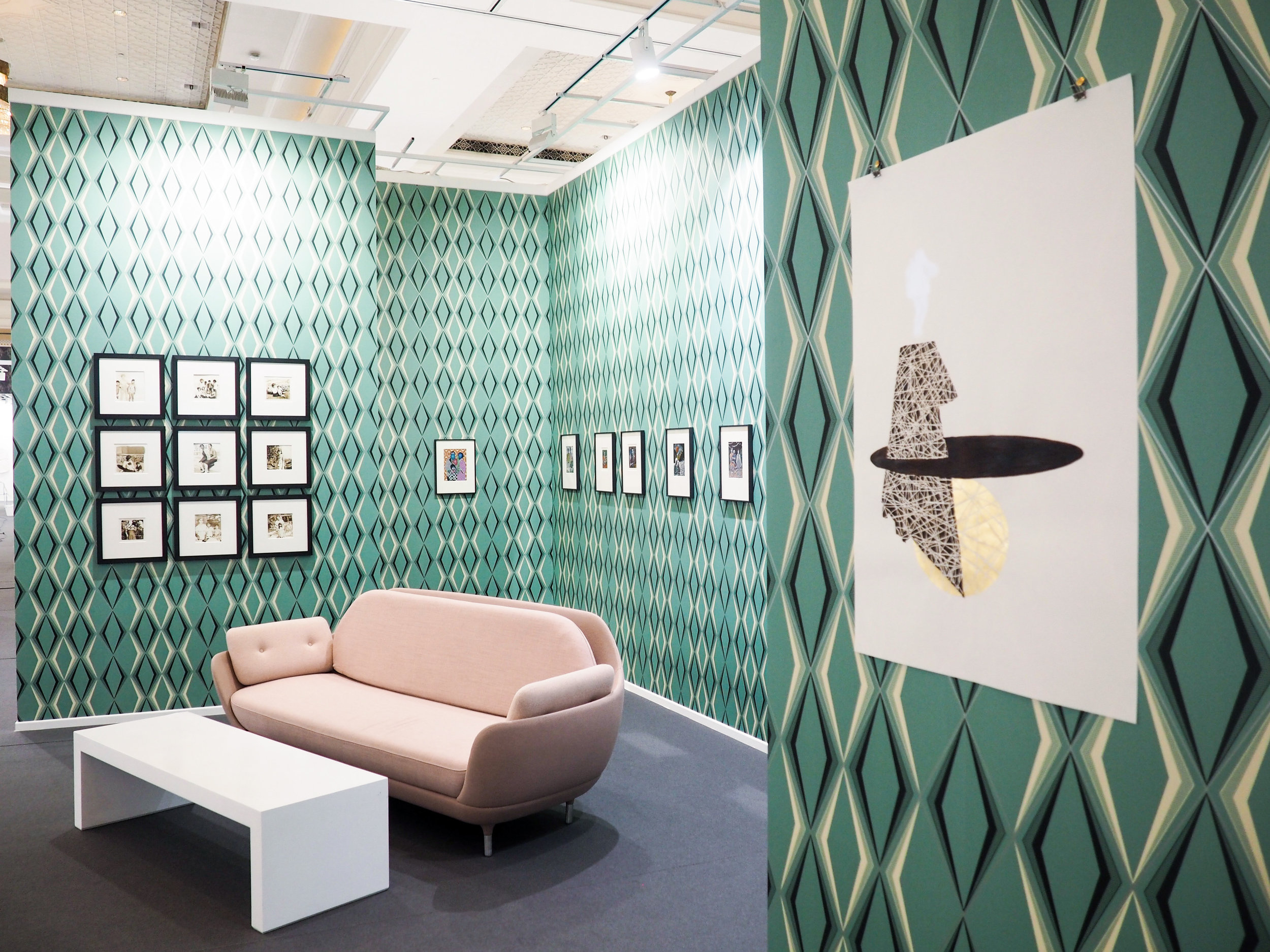
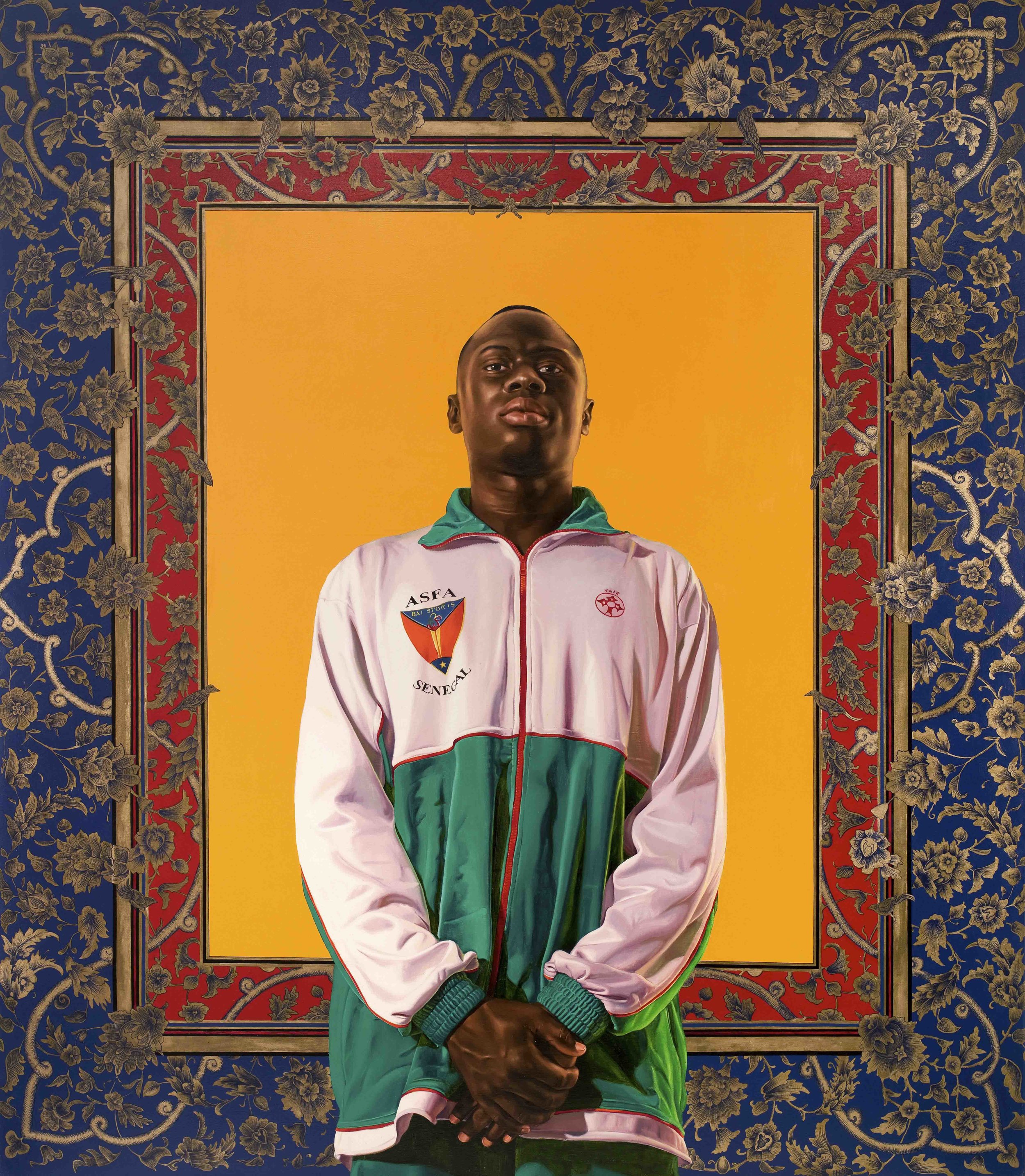
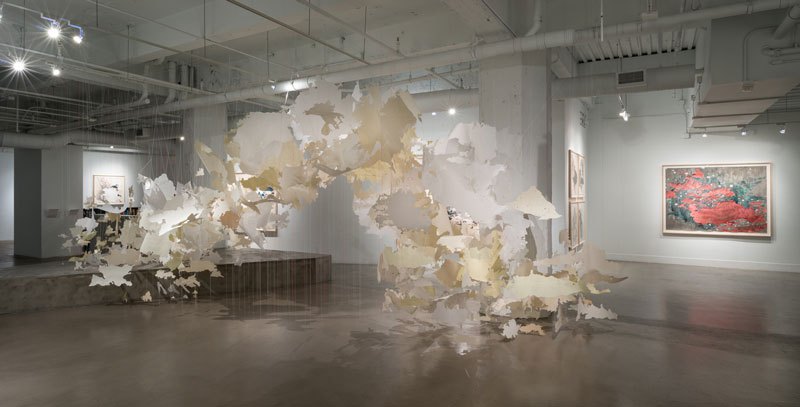
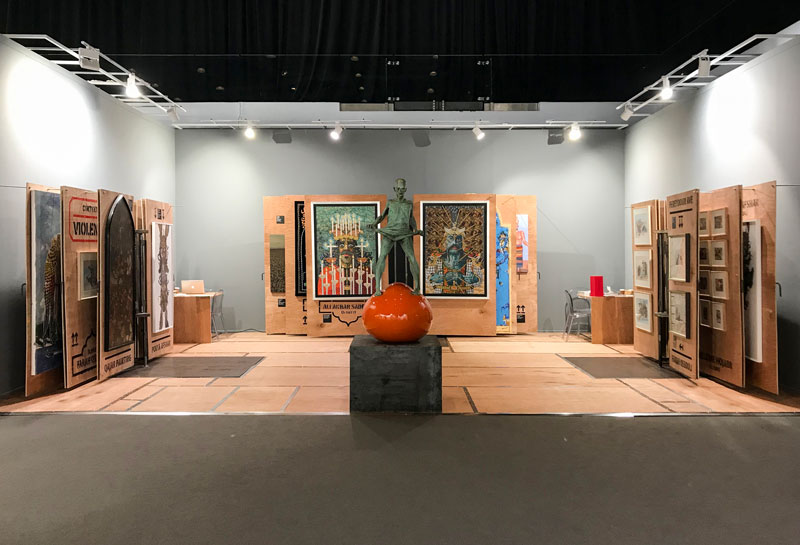
CONTEMPORARY GALLERIES
Delivering a memorable experience for visitors and buyers at a commercial art fair and to stand apart from the tens of gallery booths around yours, is perhaps the biggest challenge for any exhibitor. At the 2018 Art Dubai, perhaps the two most visually striking booths were that of Tehran’s Dastan’s Basement, who designed their booth to resemble an open studio with portfolio moving walls displaying artwork and that of London’s Kristin Hjellegjerde Gallery who used aquamarine wallpaper in a 1970s style to fit out their booth. Both spaces were exhibiting the work of emerging and established Iranian artists and the latter, showing the work of Sohelia Sokhanvari who paints in crude oil and gold was a fascinating presentation.
From the region, special mentions go to Tammam Azzam at Ayyam Gallery whose painted paper series depicts collaged abstracted Syrian street scene and to the solo presentation of Amer Shomali from Gallery One whose work made of spooled thread addresses Palestinian social and political realities.
Whilst international galleries often dominate with well-established names, one of the most photographed works at this year’s fair was the portrait of a footballer from the American Kehinde Wiley, who only recently reached mainstream knowledge as he painted the commissioned portrait of Barack Obama. A final mention must go to the floating cloudscape of fictional countries in an installation by Val Britton at Gallery Wendi Norris whose practice is couched in the investigation of maps, boundaries and geography.
- This piece was published on March 22, 2018 by Selections Arts.
- Art Dubai. March 21-24, Madinat Jumeirah, Dubai.
